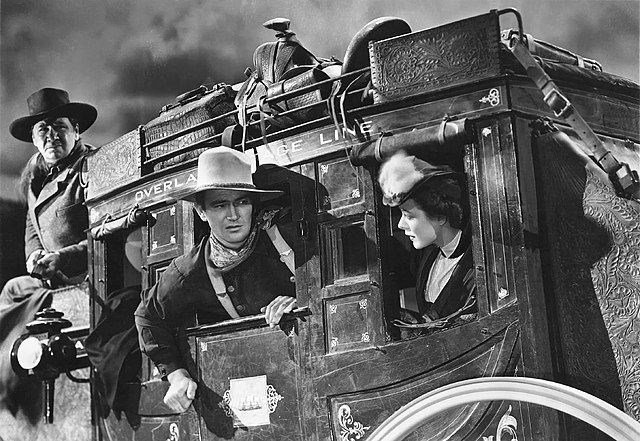Along With John Ford and John Wayne, an Early Stuntman, Enos ‘Yakima’ Canutt, Helped Make 1939’s ‘Stagecoach’ an Enduring Masterwork
Canutt put life and limb at risk in two key scenes, without which the film would not be on the docket at the American Museum of the Moving Image as part of ‘See It Big: Stunts!’

Were it not for the efforts of Enos “Yakima” Canutt (1895-1986), John Ford’s “Stagecoach” (1939) might be less than what it is — that is to say, a masterwork of American cinema — and would not be on the docket of films running at the American Museum of the Moving Image as part of “See It Big: Stunts!” Canutt put life and limb at risk in two key scenes: one in which he doubled for John Wayne and the other as an Apache warrior under the command of Geronimo.
“Yak,” as he was referred to by his friend Wayne, was the scion of a ranching family based in Washington state. Elementary school was the limit of Canutt’s education: He started bucking broncos at age 11 and became a rodeo entertainer in his teenage years. After time spent breaking horses for the French military during World War I, Canutt began doing stunt work for the actors Tom Mix and Douglas Fairbanks.
Canutt met Wayne on the set of a nondescript serial, “The Shadow of the Eagle” (1932). The actor admired the gutsy rodeo rider, and worked closely with him to fine-tune the requisite stunt work — in particular, to create a convincing illusion of fisticuffs. Wayne’s recommendation led to Canutt being hired by Ford for “Stagecoach.” The Washingtonian would go on to sub for Clark Gable in “Gone With the Wind,” train Charlton Heston for the chariot race in “Ben Hur,” and win an honorary Oscar in 1967 for “developing safety devices to protect all stunt men everywhere.”
It’s worth remembering that when Ford hired Wayne for “Stagecoach” the man born Marion Robert Morrison was not yet a star. Having purchased the rights to the short story on which it was based, Ford shopped “Stagecoach” around to various studios and was rebuffed every time: Westerns, you know, have long been considered passé. Producer Walter Wanger took it on, though he did so with reservations: Ford hadn’t directed an oater in more than a decade and about this Wayne guy: Wouldn’t Gary Cooper be more bankable?
Ford stood his ground on Wayne and Wanger capitulated, though he ended up providing less than half of the estimated budget. Ford took the cast and crew to Monument Valley for a week of filming, and then returned with them to Goldwyn Studios in Hollywood for additional footage. The putative star of the film was Claire Trevor, but take a look at how enthusiastically the camera stutters when we first see Wayne. Ford knew full and well that this was a star-making turn.

Notwithstanding Trevor and Wayne, “Stagecoach” is an ensemble picture. The multifaceted story of how an unlikely group of compatriots weather a now-politically incorrect onslaught of indigenous peoples and, not least, their own various peccadilloes is very much worth attending to. Exemplary character actors like Thomas Mitchell, Donald Meek, and Andy Devine add verve and humor, while an almost preternaturally thin John Carradine brings a silky sense of menace.
Allow me to put in a word for one of the plot’s sidebars. Among the characters along for the ill-fated stagecoach ride is Dallas (Trevor), a woman of ill repute who’s been run out of town by the moralistic biddies who make up the local branch of the Law and Order League. Wayne’s character is ostensibly the bad guy — Ringo is wanted for murder, after all — but his gentlemanly courting of Dallas will melt the hardest of hearts. John Wayne as a progenitor of beneficent masculinity: There are worse heroes to adopt.

